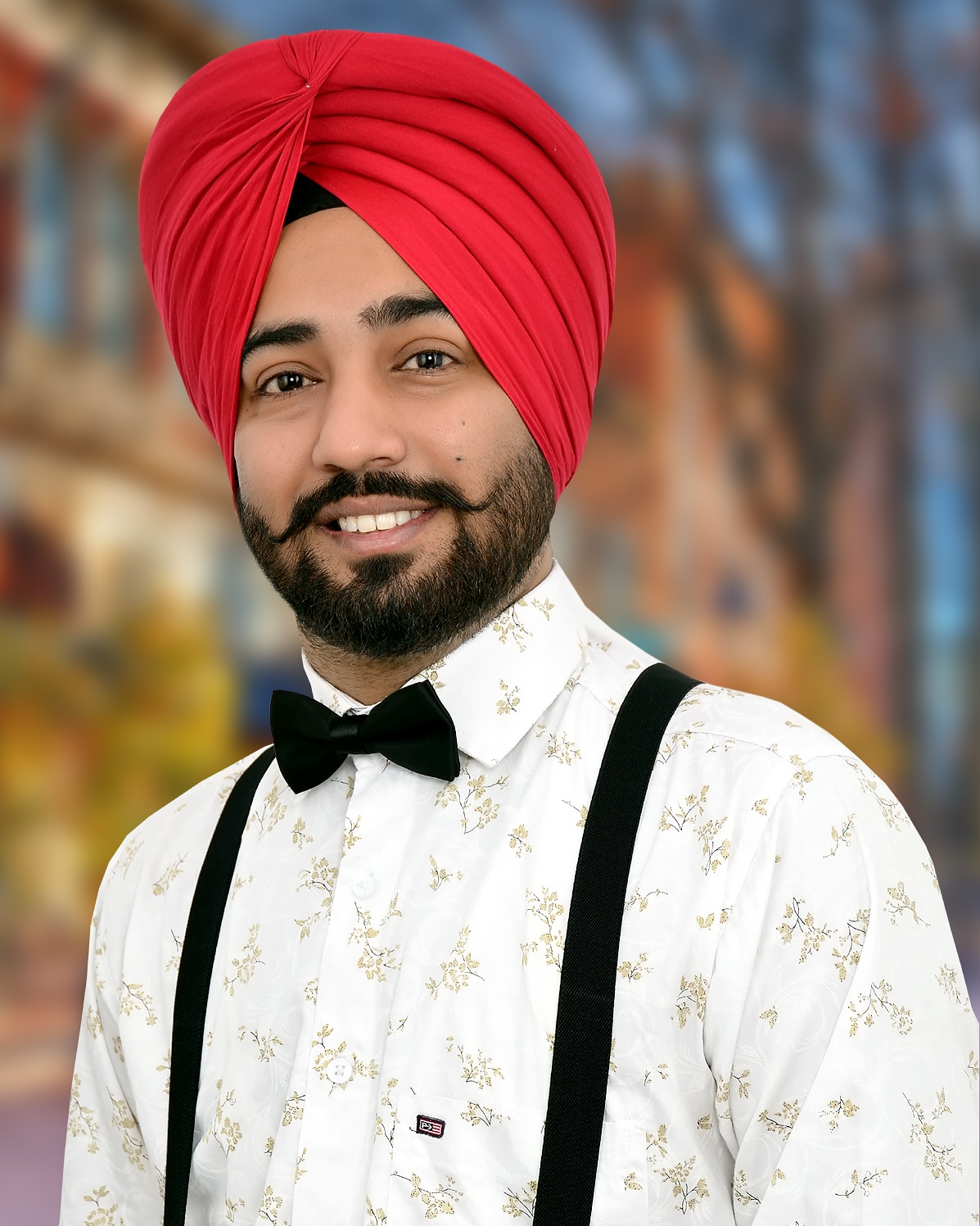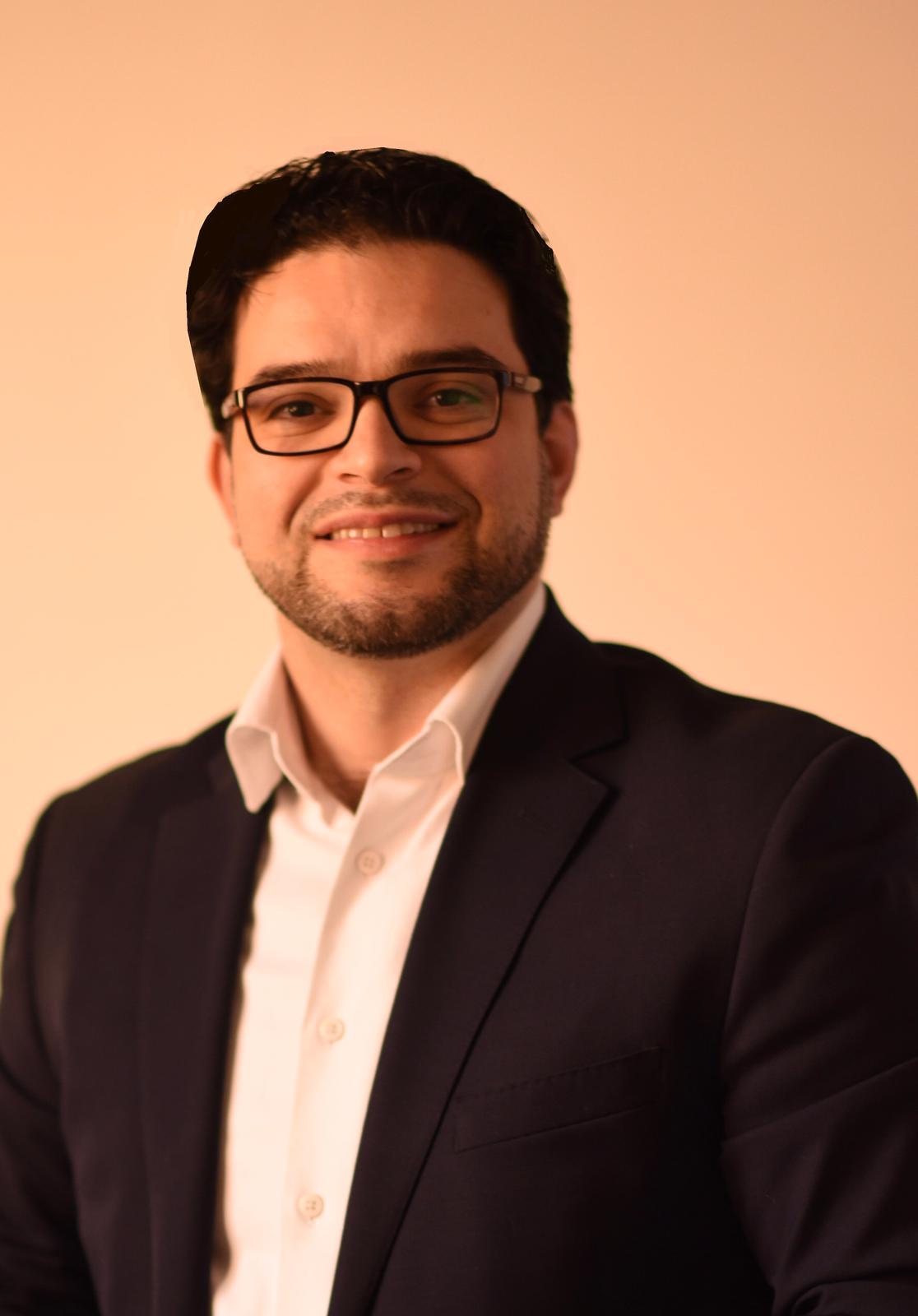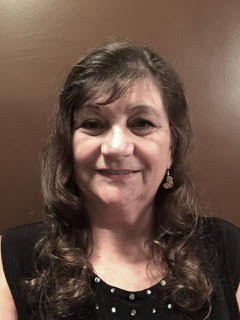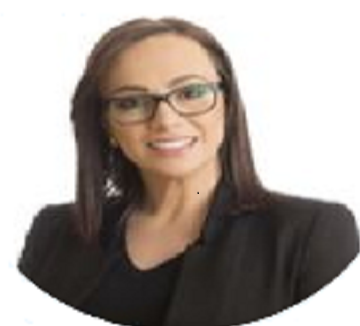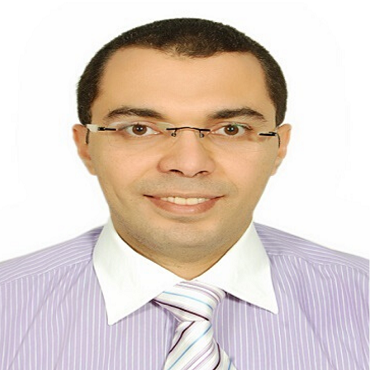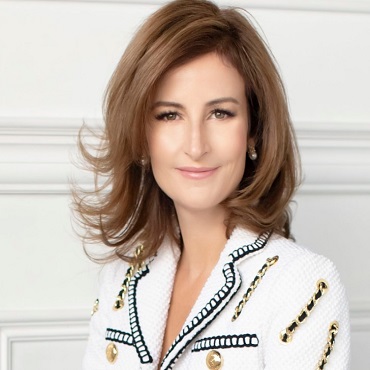Scientific Program
Keynote Session:
Title: I-PRF and A-PRF as a biological method of treatment and regeneration in dentistry and cosmetology.
Biography:
Alina Tykhomyrova finished a National Medical University of Bogomolets
Finished Ukrainian Military Academy
General Dentist in Slavna Medical Clinic from 2015
Orthodentist in Slavna medical clinic from 2018
Specialist of Hydra Facial and IPRF technology in Slavna Medical clinic from 2015
Alina Tykhomyrova finished a National Medical University of Bogomolets
Finished Ukrainian Military Academy
General Dentist in Slavna Medical Clinic from 2015
Orthodentist in Slavna medical clinic from 2018
Specialist of Hydra Facial and IPRF technology in Slavna Medical clinic from 2015
Abstract:
I-PRF – Injectable Plasma Rich Fibrin. It's a modern and unique technology of regeneration of human tissues. This technology lies in injections of patient's autologous plasma rich fibrin in damaged areas of soft tissue, mucous membrane or skin. Blood collect into emty glass tubes, centrifuge, where blood divided on two fractions: 1. Plasma rich fibrin, also contain leukocytes, platelets and growth factors. 2. Red blood cells
After collecting plasma in syringe inject in damaged areas or work with Derma Pen which help plasma penetrate deep to skin layers .Than begins the process of release of growth factors as a : VGF, EGF, BDGF, PDGF, TGF, IGF. This growth factors start to create new blood vessels, new collagen and elastin fibers thats why after this procedure we will get lifting effect and antiage effect in cosmetology and fast regeneration in tissues or damaged surfaces .
A-PRF – Advanced plasma rich fibrin .A platelet concentrate after centrifugation ,made a membrane rich on growth factors , platelets and leukocytes which has a great regenerative ability . Use in tooth extractions, implantology, sinus-lift... Growth factors work on creating a new blood vessels, new fibrin matrix, new cells and new tissue more than 14 days due to slow release of growth factors.
Title: Doctor- patients relationship, communication & management and basic tips for clinical practice growth.
Biography:
Dr. Amolack Singh (bachelor of dental surgery) has completed his dental study from BRS dental collage & general hospital Panchkula, Haryana (INDIA).He is International dental excellence award winner by world dental council LONDON. He have International dental practice license for east Africa. Now he is practicing at his own dental clinic (Marwaha dental clinic. Tanda urmur. Punjab. India) he treated more than 25000 patients. Also international ambassador of world dental council. he is also associate with Indian dental association. he is north India`s zonal head of India`s 1st dental helpline. (Govt. approved). Representing India on some International websites & provide dental treatment to their patients all over the world through his international network with dentists.
Abstract:
Previous research & studies on relationship between doctor & patient is showing that there is strong bond between both of them. Some studies showing that patients are different types like PASSIVE-DEPENDENT,INDEPENDENT-SKEPTICAL,INTELLECTUAL-RESEARCHER,EXPEDIENT-FLEXIBLE,OPEN MINDED-EXPLORING. But in the modern era of technology & advancement patient`s behaviour changes day by day. This is my own study more then 20000+ patients & in various oral and dental check up camps. there is new category called CHALLENGING patients.
There is also very strong bond between patients and our daily clinical practice success growth. It does not depends on patient`s behaviour. it depends upon Dentist`s behaviour. By putting some important tips into our daily clinical practice we will make to our practice perfect and top rated. There are so many basic things like how to talk, how to manage common dental emergencies, how to handle medical & neurological compromised patient. how to make final treatment decision for challenging patients. Some basic & small things which we ignore in our daily practice but that small things have great importance.
Title: Effect of 940 nm Diode Laser Irradiation Prior to Bonding Procedure on Postoperative Sensitivity Following Class II Composite Restorations
Biography:
Mina Jazaerijouneghani has completed his DDS from Mashhad University and MS in Oral Medicine from Hamadan University of medical Sciences. She is the editor in cheif of Avecinna Journal of Dental research. She has been a staff of school of dentistry since 2011 till now.
Abstract:
This study aimed to assess the efficacy of 940 nm diode laser irradiation prior to the bonding procedure for reduction of postoperative sensitivity (POS) following the class II composite restorations. This double-blind clinical trial evaluated 30 patients with bilateral premolars with mesio-occlusal or disto-occlusal carious lesions. In each patient, the teeth were randomly assigned to the laser and control groups. After cavity preparation and isolation and prior to the bonding procedure in the laser group, 940 nm diode laser was irradiated in continuous wave mode with 100 mW power and 4 J/cm2 energy density. In the control group, irradiation was performed using the aiming beam. The cavities were then restored with composite resin. Sensitivity to cold was assessed at baseline (before the intervention) and at 1, 14 and 30 days after the restoration using a visual analog scale (VAS).The mean VAS score significantly decreased in both groups of laser and control at all time points compared to baseline (p<0.05). The mean VAS score was not significantly different between the laser and control groups at baseline and 1st day (p>0.05) but the mean VAS score in the laser group was significantly lower than that in the control group at 14 and 30 days (p<0.05). As a conclusion, the results showed that irradiation of diode laser with 940 nm wavelength prior to the bonding procedure and class II composite restoration can significantly decrease the POS at 14 and 30 days compared with the control group. Diode laser irradiation at 940 nm wavelength prior to the bonding procedure and class II composite restoration can serve as an effective modality to decrease POS in short-term.
Title: Orthodontic space opening Vs space closure: Hypodontia Case reports
Biography:
Ryad is a highly motivated and enthusiastic specialist orthodontist, who works hard to provide excellent level of patient care by closely following the latest evidence-based guidelines. His clinical and research interests lie in the area of congenitally missing teeth (Hypodontia) and the associated multi-disciplinary team approach, ranging from theory to design and implementation. He has managed a wide range of malocclusions, many of which were complex malocclusions that required multi-disciplinary team approach. Likewise, he provides consultations to many parents and their children as part of collaboration with the local general dental practitioners in planning interceptive orthodontic protocols at various ages. Ryad is a university lecturer since 2013, and has been involved in teaching both undergraduate and postgraduate programmes. He contributed to many conferences, workshops and committees. Currently, he is based in the UK and collaborates with the Academic and Clinical Excellence post-graduate diploma (ACE) in orthodontics at London and Manchester.
Abstract:
Hypodontia is the most commonly developmental anomaly in man, it can present to a varying degree of severity: mild, moderate or severe. Early diagnosis of hypodontia is important due to its negative impact on function and physiological status. Malocclusion, periodontal damage, and lack of alveolar growth can be caused by hypodontia3. Thus, a broader understanding of hypodontia patients is vital; eventually leads to an improvement in the outcome of treatment and enhancing the overall quality of life. Case 1: G. N. is a 12-year old girl presents clinically with a class II division I incisal relationship on mild skeletal II base, complicated by: incompetent lips, missing upper lateral incisors, deep and complete overbite to palate, scissors bite affecting the UL4. The upper labial segment was spaced and proclined. The overjet measured 7mm and the molar relationship was a full-unit Class II on the right side and half-unit Class II on the left side. Case 2: E. M. is a healthy 43-year old lady who presented with a class III incisal relationship on skeletal I base, with increased lower vertical facial proportions. This is complicated by: missing upper lateral incisors, reduced overbite, and a heavily restored upper right canine. The overjet measures -1mm and both upper and lower labial segments are spaced and proclined. Discussion: The management of absent teeth involves a multidisciplinary team approach. Generally, edentulous space can be left open for an eventual restoration, or closed by orthodontic treatment. The treatment plan may employ mechanics, which enhance the facial proportions, and may ultimately improve the lip position and facial attractiveness. However, the final decision must be made on an individual basis, and can only be agreed after careful consideration of all factors of patient’s malocclusion.
Oral Session 1:
- CAD/CAM Dentistry | 3D Printing in Dentistry | Sedation Dentistry | Digital Dentistry | Dental Surgery | Cosmetic Dentistry | Restorative Dentistry | Laser Therapy in Dentistry | Future trends in Dentistry
Title: Ozone Gas & Water in Dentistry
Biography:
Registered Dental Hygienist, IABDM, Canada
Abstract:
Dentistry is considered one of the oldest medical professions. The field of Dentistry has been dated back to 5000 BC. It wasn’t until 1700’s that dentistry has become a more defined profession.
Pierre Fauchard of France 1678 – 1761 is known today as the Father of Modern Dentistry.
We have come a long way since the 1700. Traditional dental offices are based on the drill & fill concept. Most traditional dental offices operate on a reactive treatment plan rather then a proactive treatment plan. A patient comes in with a cavity, the decay needs to be removed and a different variety of filling material can be placed inside the tooth. The dental hygienist continues to remove the hard and soft deposits on peoples’ teeth.
Costs for dental treatment continue to rise.
The public is starting to seek out a gentler way of treatment; they are starting to seek out alternative treatment from a holistic dental practice. Is there another way to treat decayed teeth other than drill, fill & gum disease with all the scraping?
People are now searching for less painful, less traumatic types of treatments.
Most dental office employs Dental Hygienists. As trained professionals we have the honour of helping people to become healthier. Patients in Canada and the USA see their dentist/dental hygienist more then they visit their family doctor. This enable the Dental professional to give greater level of care to our patients.
As a Biological Dental Hygienist, we are able to offer a greater level of care.
Dental Hygienists are now screening for oral cancers on a regular basis. We are able to check and monitor blood pressures & can have the patient follow up with their blood sugar with their primary care physician. Dental Hygienists are no longer seen as “teeth cleaners” We have adopted a Preventive Role. This involves more involvement with the patient, reviewing homecare techniques, looking at the how the role of inflammation affect the whole body, not just in the patients mouth. This does involve scraping/scaling/root planning, to remove hard and soft deposits but we also look at the bacterial cascade that is set up in the bodies of our patients when the DH.
Inflammation = Infection, Infection = Disease.
Title: Beyond Dentofacial Harmony
Biography:
Rubba Izzeddin Dentist , Associate Professor Faculty of Dentistry U.C. Associate Researcher of the C.I.M.B.U.C, Deputy Researcher of I.N.A.O.M, Official Dentist of the Miss Earth Carabobo (2019), Official Dentist The Contest By Osmel Sousa (2018), Official Dentist Miss Carabobo (2015-2017), Doctorate: Education Sciences Libertador Experim ental PedagogicalU niversity, Doctorate Management in DentalSciences Caribbean International University.
Abstract:
The idea of ​​carrying out this dissertation was born to answer questions and concerns regarding how to improve or restore the beauty of the smile and how the dentist should not only have mastery of facial, dentofacial and dental analysis but also have an artistic vision to give an adequate response, generating satisfaction, joy and well-being. Without forgetting that the patient perceives the beauty of agreement, personality, family, social and cultural environment. All people observe beauty in different ways, even if there are pre-established parameters by society. Doing scientifically, the significant facial aesthetics in the development and social integration of the individual, conferring greater self-esteem, which influences their main capabilities (physical, biological and social), to achieve a dentofacial restoration, with the provision of reliable diagnostic criteria that allow aesthetic assessment, determination of the cause of disharmony and the level of magnitude.
Title: Prevalence of malocclusion and assessment of orthodontic treatment needs in Malay transfusion-dependent thalassemia patients
Biography:
Mohamed H Kosba (MK) dentist and researcher with extensive knowledge of dental procedures hygiene products devices and solutions with a speciï¬c interest in Orthodontics and Endodontics. Bast knowledge of clinical procedures, Specially in Orthodontics expert. Recently MK interested in the orthodontic management of thalassemia patient in particular diagnosis of orthodontic problems and how to prevent, lessen and manage these problems
Abstract:
Title: How artificial intelligence (AI) can transform dentistry: Navigating opportunities and risk.
Biography:
Dr. Natalie Archer is the CEO and Founder of Archer Dental Corp which has three locations in Toronto, Canada. She's also a past Vice-President of the Royal College of Dental Surgeons of Ontario (the dental professional regulatory, in Ontario, Canada). More recently she’s an angel investor in technology companies and has co-founded OpenWide. Natalie is the subject matter expert for dentistry at OpenWide and shares development credits on dental chatbot platforms. She has spent some time helping design and test systems for delivering AI-based chatbots to engage dental patients and convert potential new patients via useful conversations through websites and social media. Always curious and living and working in one of the world’s hubs for AI innovation, Natalie is an emerging thought leader on the role that AI can play in dentistry.
Abstract:
New technology continues to improve dentistry and the next transformation will be the widespread adoption of artificial intelligence (AI).
AI systems are coming to market in all major industries today, but deploying the software and system protocols in dentistry requires embracing and creating solutions to some unique challenges. Some of the problems are false perceptions.
What is AI? What practical value can the technology offer to dental practices? How is the cost / benefit balance weighed for this technology and does that calculation change in short term, mid-term, or long term planning models?
What are chatbots? How do they drive value, help consumers and improve a website's presence? What are the risks of deploying artificially intelligent systems, especially considering data privacy, in dentistry? How do you balance increasing demands for “ethical AI”, and possible backlash from patients due to perceived depersonalization of dental care as a result of technology?
Dr. Natalie Archer will recount her personal experience as an early adopter of chatbot software in her own dental practices and she’ll present what she has learned about 1) evaluating whether and not to deploy AI in a dental practice, and 2) the surprising benefits of the technology in terms of patient care improvements and brand development, and 3) the importance of developing proper controls for managing legal / ethical / privacy /operational considerations of AI adoption.


